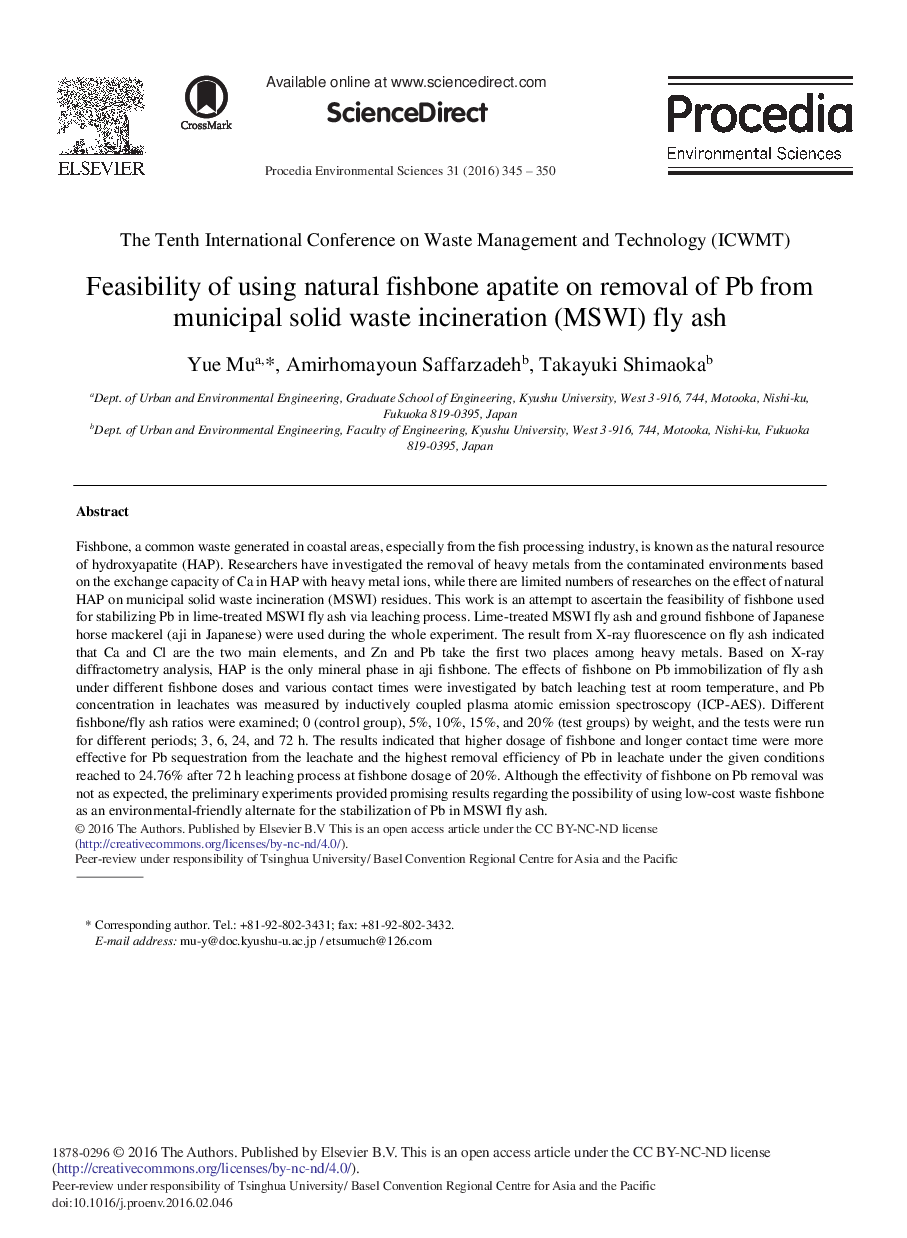| کد مقاله | کد نشریه | سال انتشار | مقاله انگلیسی | نسخه تمام متن |
|---|---|---|---|---|
| 4401558 | 1618613 | 2016 | 6 صفحه PDF | دانلود رایگان |
Fishbone, a common waste generated in coastal areas, especially from the fish processing industry, is known as the natural resource of hydroxyapatite (HAP). Researchers have investigated the removal of heavy metals from the contaminated environments based on the exchange capacity of Ca in HAP with heavy metal ions, while there are limited numbers of researches on the effect of natural HAP on municipal solid waste incineration (MSWI) residues. This work is an attempt to ascertain the feasibility of fishbone used for stabilizing Pb in lime-treated MSWI fly ash via leaching process. Lime-treated MSWI fly ash and ground fishbone of Japanese horse mackerel (aji in Japanese) were used during the whole experiment. The result from X-ray fluorescence on fly ash indicated that Ca and Cl are the two main elements, and Zn and Pb take the first two places among heavy metals. Based on X-ray diffractometry analysis, HAP is the only mineral phase in aji fishbone. The effects of fishbone on Pb immobilization of fly ash under different fishbone doses and various contact times were investigated by batch leaching test at room temperature, and Pb concentration in leachates was measured by inductively coupled plasma atomic emission spectroscopy (ICP-AES). Different fishbone/fly ash ratios were examined; 0 (control group), 5%, 10%, 15%, and 20% (test groups) by weight, and the tests were run for different periods; 3, 6, 24, and 72 h. The results indicated that higher dosage of fishbone and longer contact time were more effective for Pb sequestration from the leachate and the highest removal efficiency of Pb in leachate under the given conditions reached to 24.76% after 72 h leaching process at fishbone dosage of 20%. Although the effectivity of fishbone on Pb removal was not as expected, the preliminary experiments provided promising results regarding the possibility of using low-cost waste fishbone as an environmental-friendly alternate for the stabilization of Pb in MSWI fly ash.
Journal: Procedia Environmental Sciences - Volume 31, 2016, Pages 345–350
